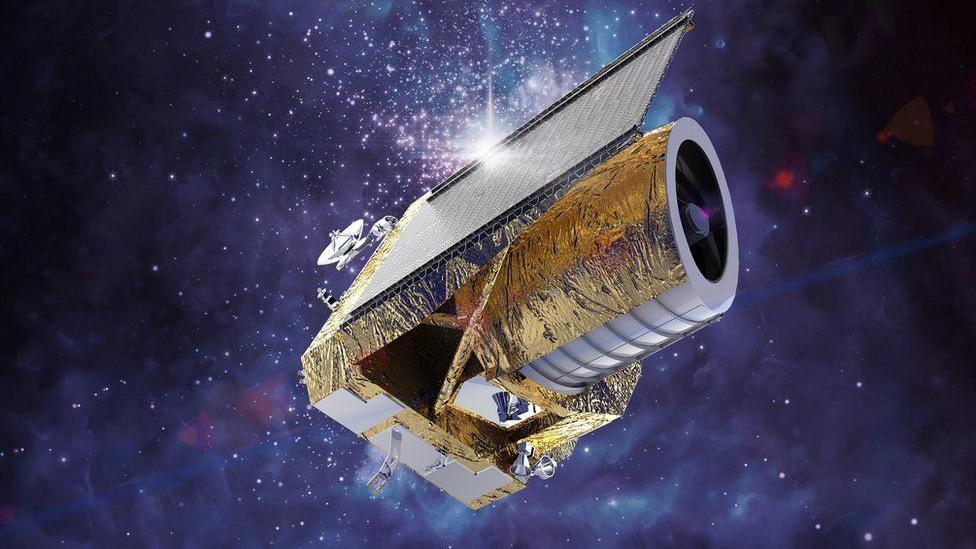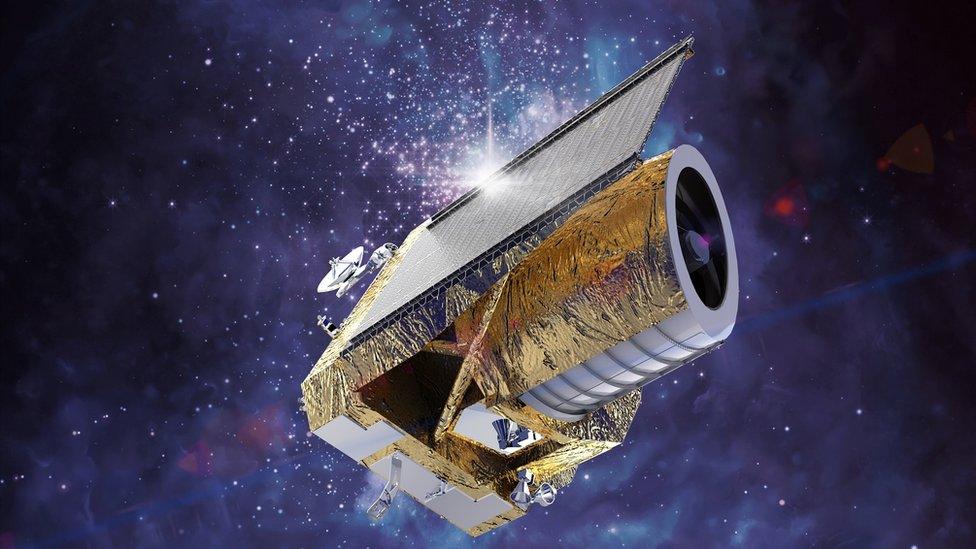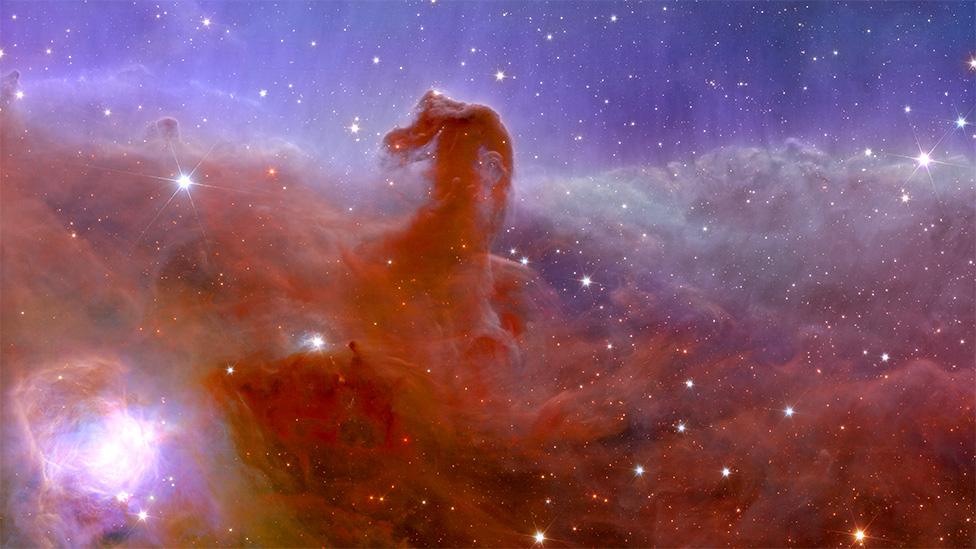Telescope saved after mirrors freeze in orbit

Euclid has been given six years to assemble its 3D map of one-third of the sky
- Published
A telescope that lost vision due to ice as it moved through space is operational again after scientists used a new technique to remotely warm the mirrors inside.
The Euclid Space telescope carries technology from the Buckinghamshire based Open University's Centre for electronic imaging.
The telescope, which was launched into space in July on a six-year mission to map dark matter and dark energy, began to stop working properly after ice began to build up on its optics.
Dr Ben Dryer from the Open University said: "This telescope is our best chance of working out what dark matter and dark energy in our universe are."
Watch: 'Dark explorer' telescope launched into space
Euclid, also known as the "Dark explorer", is a European Space Agency (Esa) project that has had significant scientific and engineering input from the US space agency Nasa.
Dr Dryer explained the spacecraft accumulates water that cannot be removed during construction on Earth, and it begins to freeze in space.
He said: "But if we heat it up from -140c to -110c, it gives the ice enough energy to start melting in space.
"That's what we've done over the last couple of days, and we've seen a 15% increase in the amount of light coming through into the camera."
Esa said that the newly devised procedure to de-ice the mirrors "performed significantly better than hoped".
Mischa Schirmer, calibration scientist for the Euclid Consortium and one of the main designers of the de-icing plan, said the procedure "worked like a charm".
She explained: "Our primary suspect, the coldest mirror behind the main telescope optics, was heated from -147°C to -113°C.
"It didn't need to get hot, because in a vacuum this temperature is enough to quickly evaporate all the ice."
The satellite can heat up to room temperature, but scientists want to avoid doing that as it could disturb the calibration of the mirror alignment inside the telescope.
Dr Dryer added: "We took a very softly softly approach to try and get rid of the ice at a very low temperature to minimise the amount of re-calibration we have to do."
Follow East of England news on Facebook, external, Instagram, external and X, external. Got a story? Email eastofenglandnews@bbc.co.uk, external or WhatsApp us on 0800 169 1830
Around the BBC
- Published1 July 2023

- Published7 November 2023
